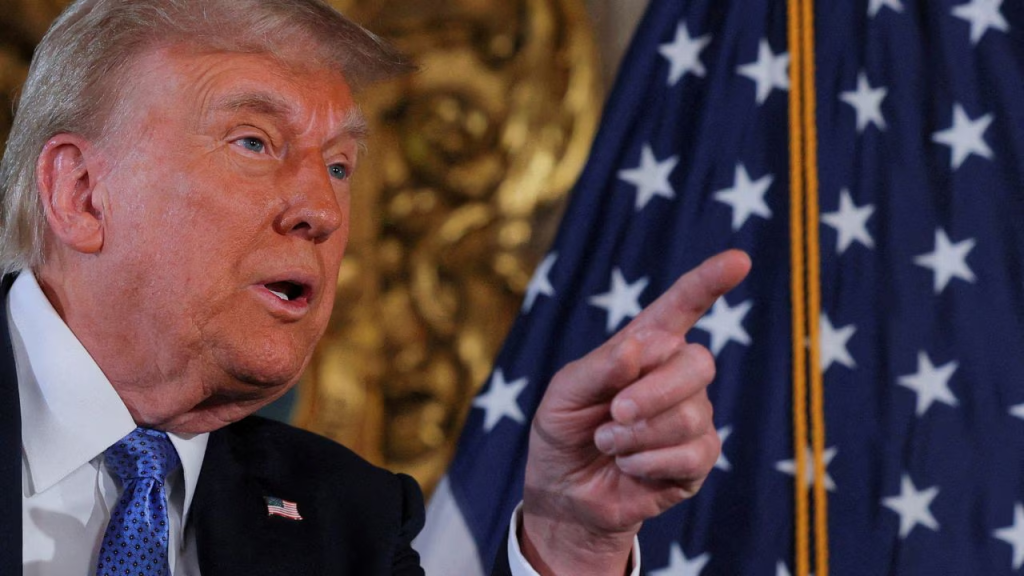
The United States has long been a top destination for international students. Every year, thousands of young people from around the world come to the U.S. to pursue higher education, bringing with them different cultures, skills, and fresh perspectives.
In total, there are around 1.5 million international students currently in the country. But in recent years, especially during Donald Trump’s presidency, this group has been facing serious challenges.
His administration’s actions have created fear, uncertainty, and confusion among these students, many of whom now feel less welcome in the country they once saw as full of opportunity.
Recently, the Trump administration began taking strict steps against international students, with hundreds of them reportedly losing their student visas and even their legal status.
This sudden crackdown is not only unexpected but also extremely confusing for students and schools alike. One such case that caught national attention was that of Rumeysa Öztürk, a graduate student at Tufts University, who was arrested by ICE agents in a manner that felt more like an abduction.
Her case sent shockwaves across student communities and universities, which were already struggling to understand the government’s changing stance on immigration and student policies.
What makes the situation worse is the lack of transparency. While earlier incidents were covered in the media, recent actions by immigration officials have been quieter, creating an atmosphere of silence and fear.
Students are hearing stories of their peers being deported without clear reasons, their visas being cancelled, and their lives being turned upside down overnight. This environment has left students constantly anxious, unsure if they are next, or if they are even doing something wrong.
Under Trump’s leadership, immigration policies saw a massive shift. The administration has consistently pushed for tighter borders and stricter rules. These changes were not limited to illegal immigration.
Even those who followed the rules—like international students—have been caught in this wave of enforcement. Universities have also been left in a difficult position.
Many institutions are trying to protect their students and give them clarity, but with ever-changing rules from the government, it has become increasingly hard to keep up.
A big concern is how this affects the future of education in America. International students don’t just bring cultural diversity—they also pay billions of dollars in tuition fees and support the U.S. economy in many ways.
Many of them also go on to work in American companies, contribute to research, and even become permanent residents. Cutting off this pipeline could have long-term effects, not only on universities but also on the country’s global competitiveness.
Schools are already seeing a drop in new international student applications, as students choose countries like Canada, Australia, or the UK instead, places where they feel more welcome and secure.
The broader issue lies in the message being sent out to the world. When students are arrested, detained, or deported without clear explanations, it makes international communities question whether the U.S. still values foreign talent.
Many of these students are not just visitors; they have been living in the country for years, building lives, making friends, and contributing to their communities. Yet, they are now being treated like potential threats.
In addition to visa terminations, some students report being stopped at airports, questioned aggressively, or told to leave the country even when they have valid documents.

These actions are not only damaging their academic careers but also affecting their mental health and sense of safety. The fear of being taken away by immigration agents has become a daily stressor for many.
Even though the Trump administration has often justified these actions as part of national security or immigration control, critics argue that the real goal is to discourage immigration altogether.
By creating an atmosphere of fear, they believe the administration is trying to lower the number of foreigners in the U.S., even if they are students, workers, or legal residents. And in doing so, it’s the students who are paying the price, many of whom have done nothing wrong.
It’s also important to note that this crackdown has not gone unnoticed. Universities, civil rights groups, and lawmakers have raised their voices against these policies.
Some schools have filed legal challenges, and several advocacy groups are working to provide legal support to affected students. But while these efforts may bring relief in some cases, the larger problem remains—an unclear and harsh policy direction that targets international students without warning.
As this situation continues, students are being forced to make difficult choices. Some are going back to their home countries, while others are transferring to institutions in safer countries. Many are left waiting in uncertainty, unsure whether they’ll be able to complete their education or even stay in the U.S. at all.
At its core, this isn’t just a policy issue. It’s about people—students who came to the U.S. with dreams and ambitions, who followed the rules, and who are now being punished through no fault of their own.
And unless something changes soon, America risks losing a generation of international minds who once believed it was the land of opportunity.
